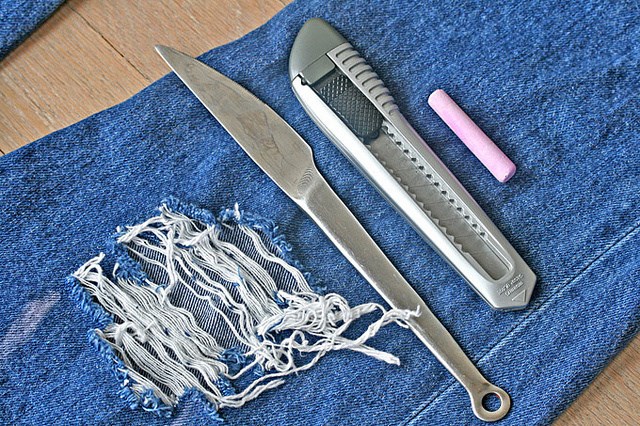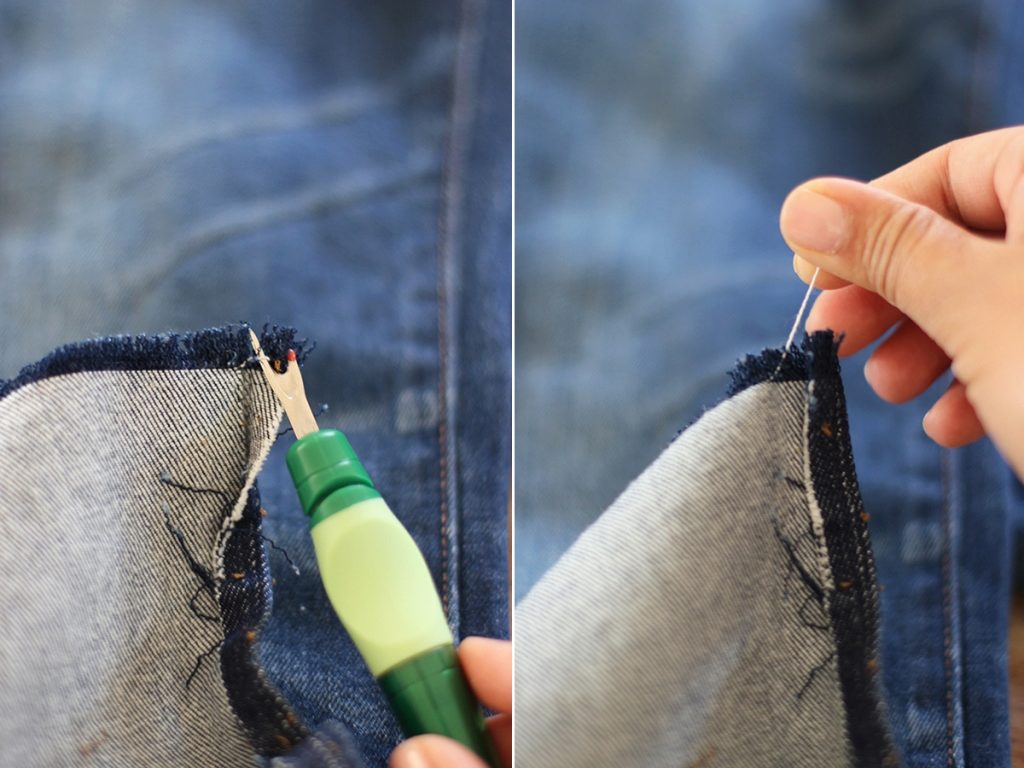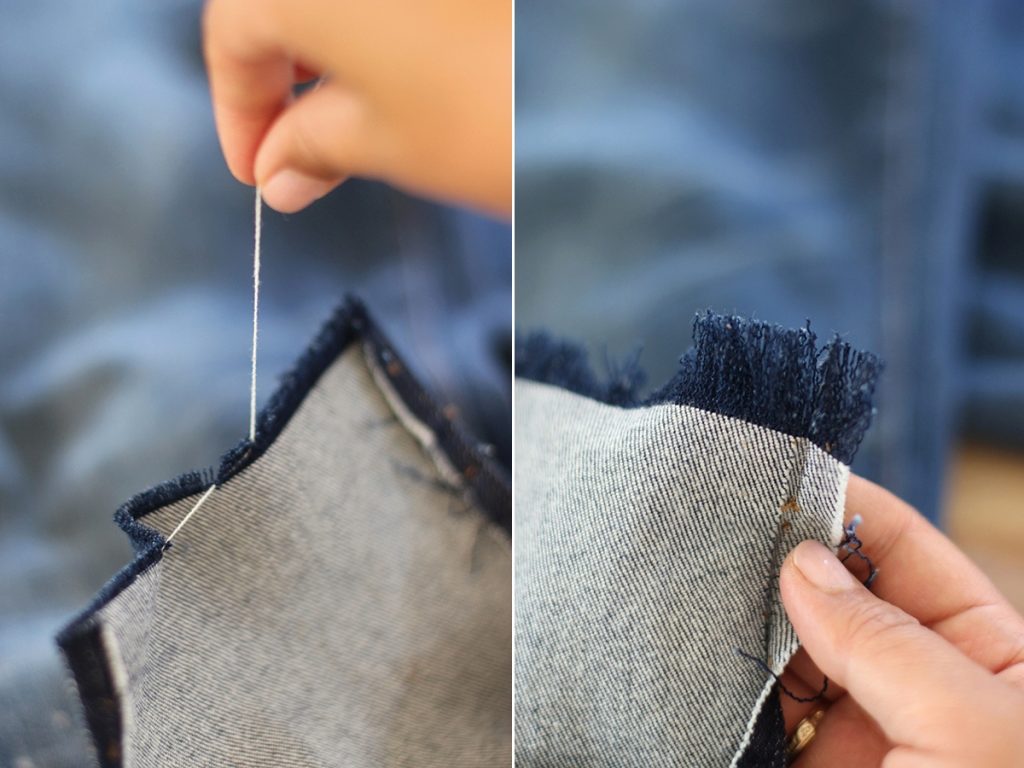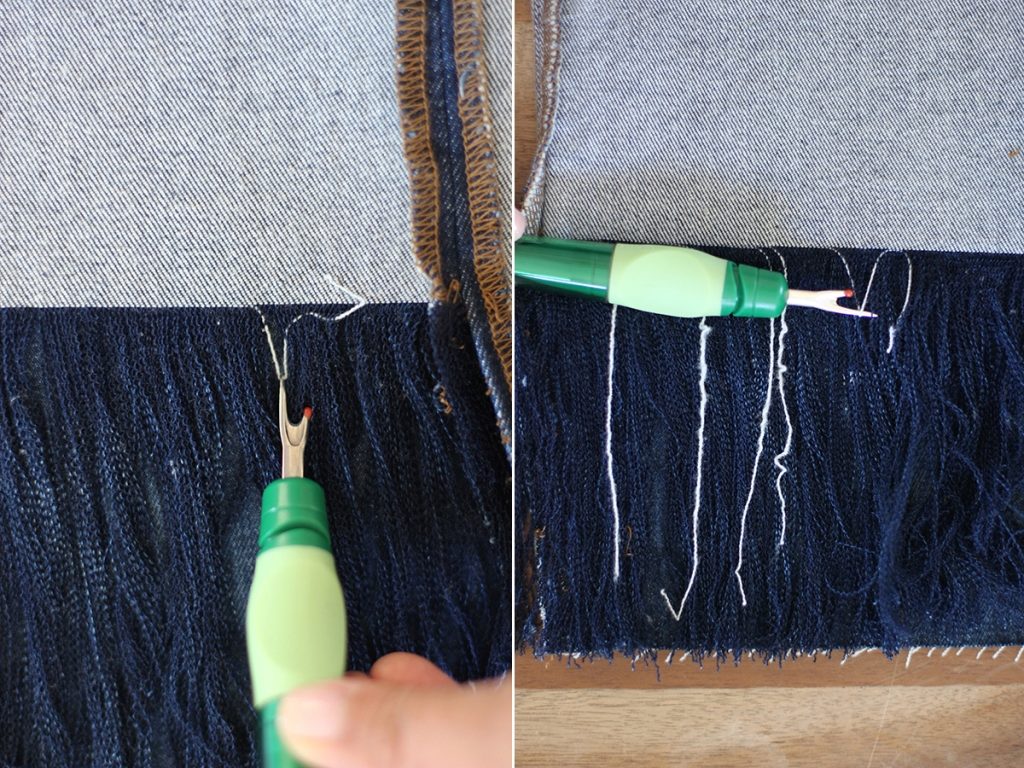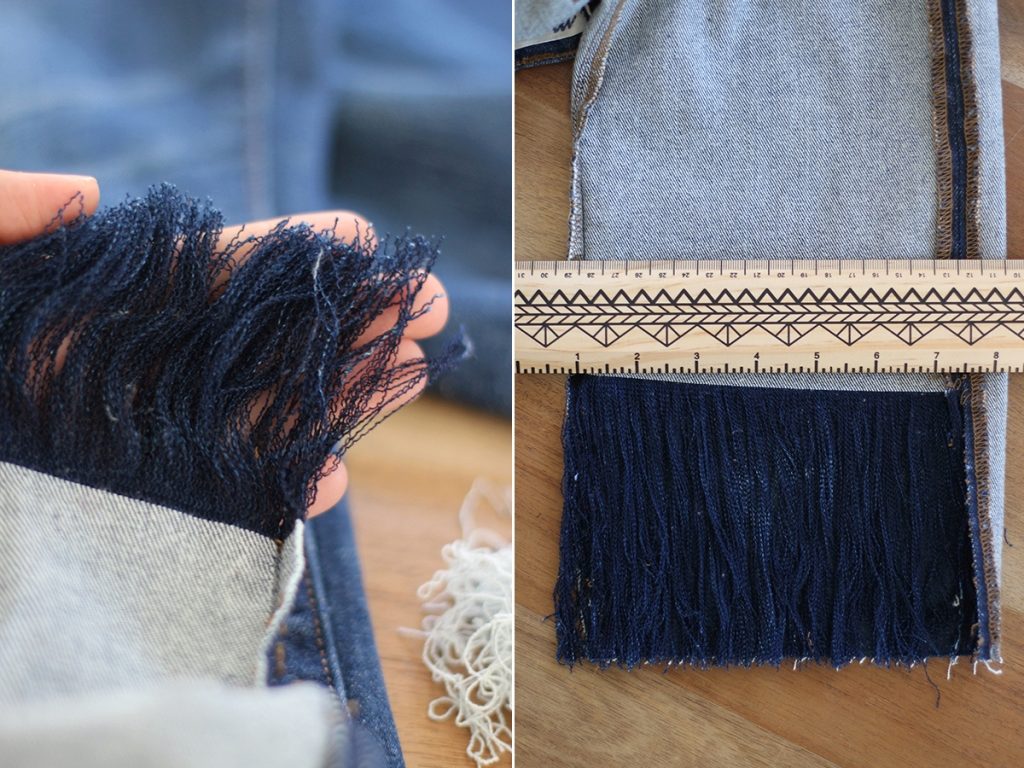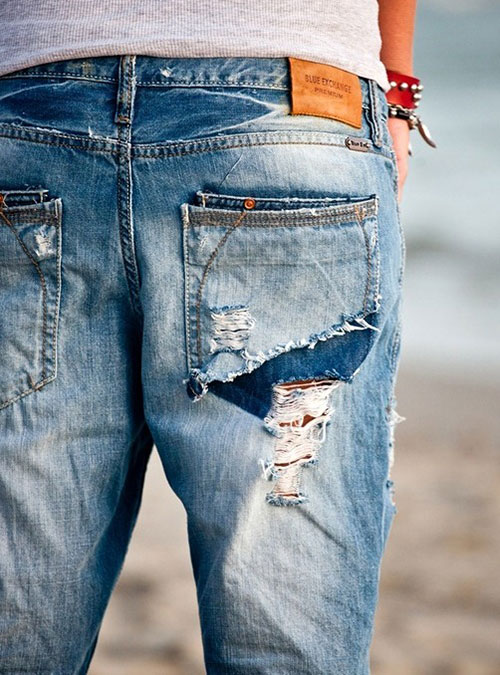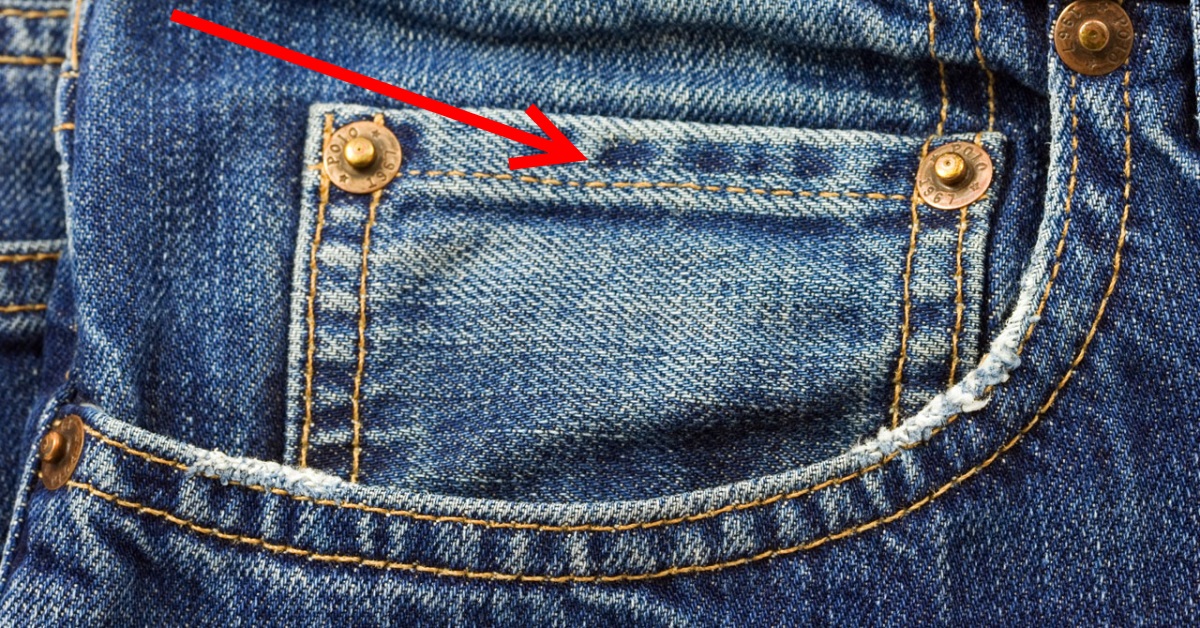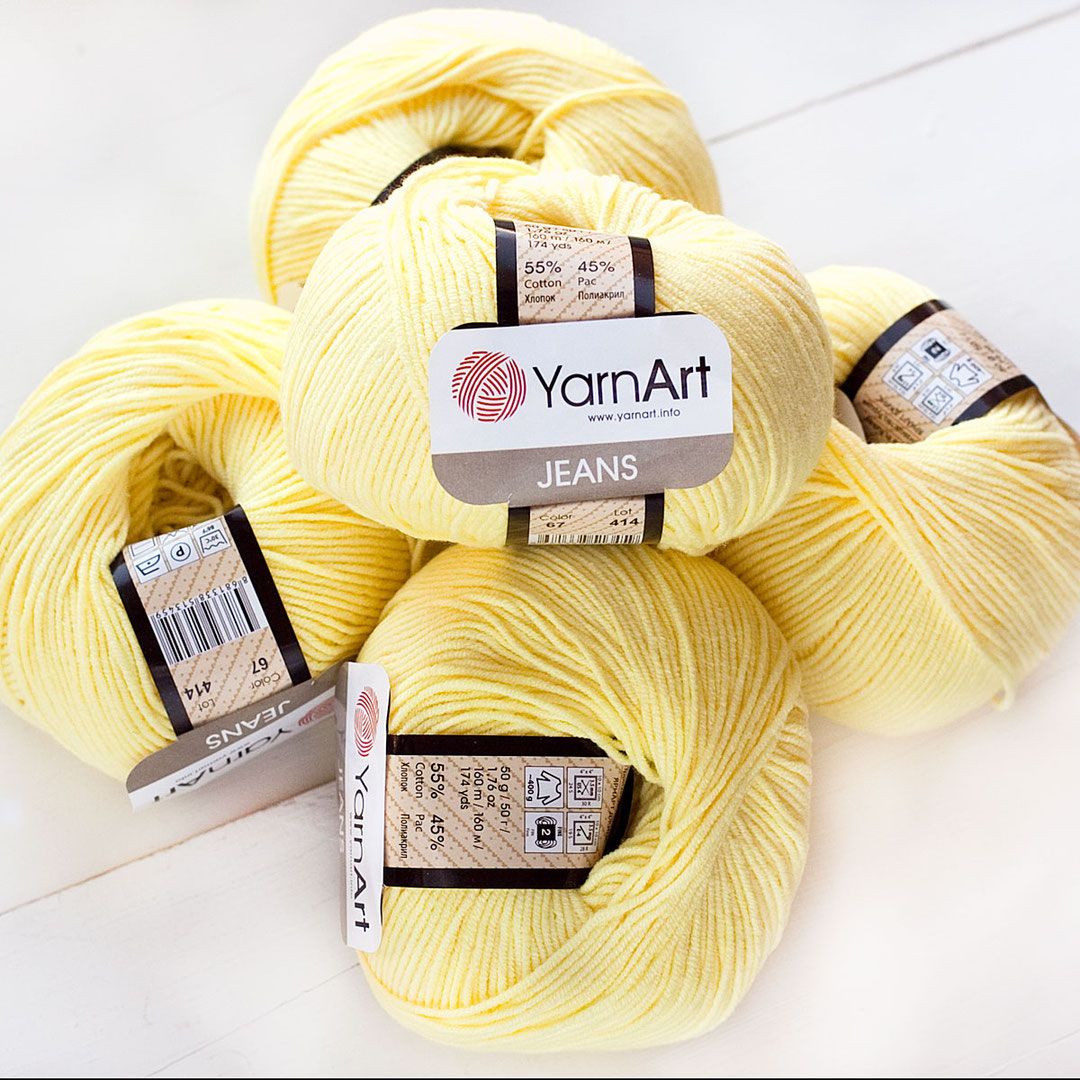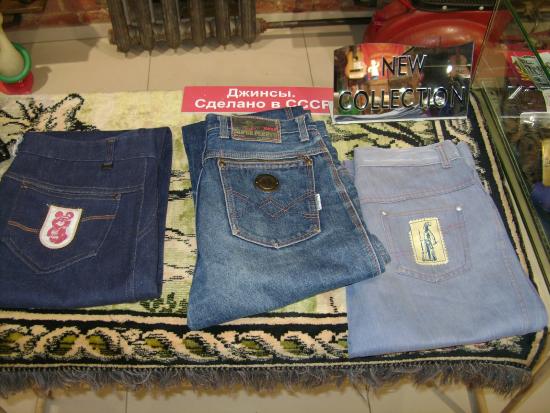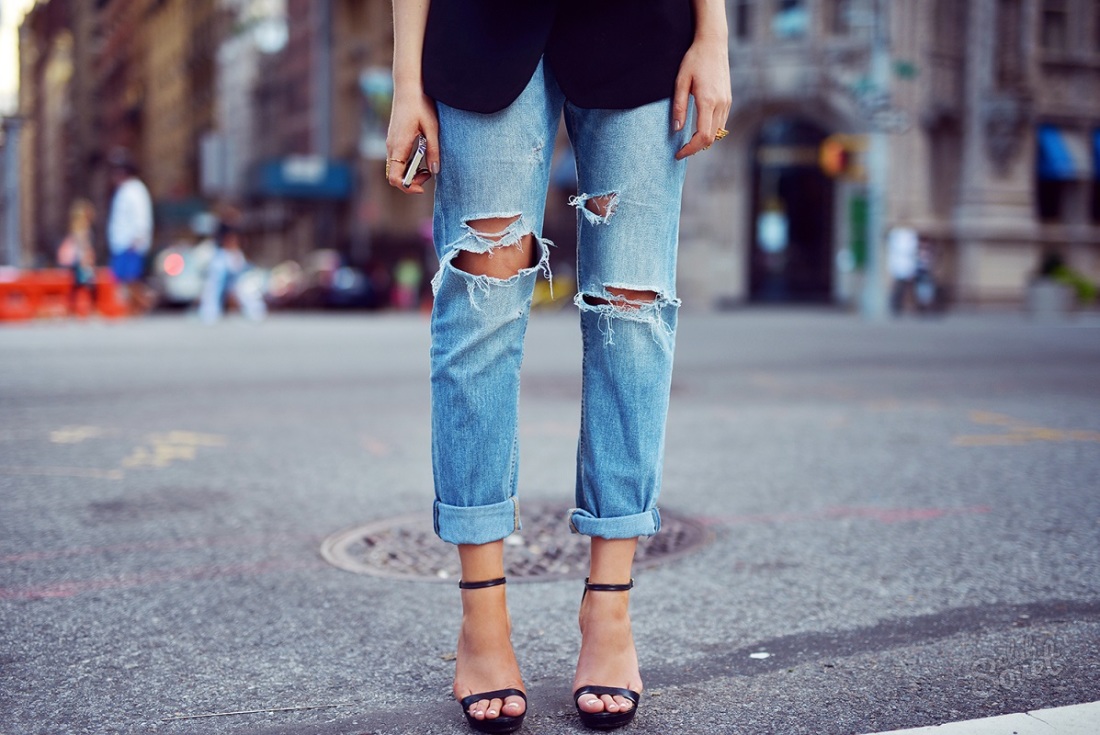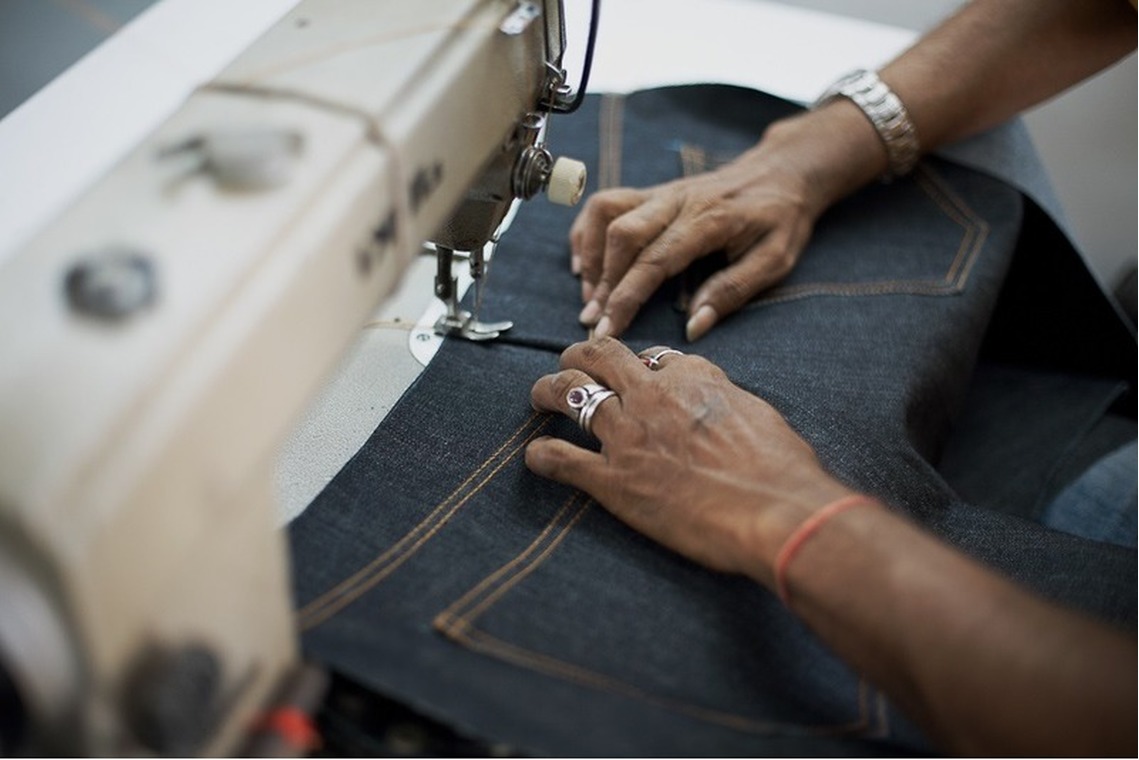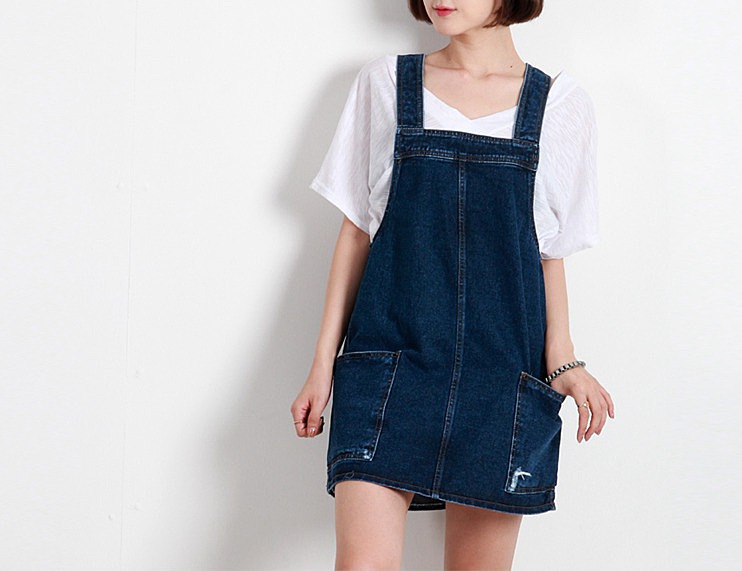Denim clothing is so democratic that it allows any decor. The next fashionable offer is jeans with fringe, which appeared as a tribute to the beloved boho style. The thread trim looks especially original on shorts and jeans with a shortened length. The bottom of the legs is designed straight or at an angle, the back half is made longer than the front. You can make fringe yourself, using the simplest tools that are in almost any home. Knowing how to make fringe on jeans, you can transform any model.
Necessary tools
Making fringe is not a complicated process, mostly consisting of manual operations. To do everything quickly and efficiently, prepare the following devices and tools:
- a measuring tape, a small ruler, 25-30 cm long;
- chalk or a flat piece of soap, for drawing lines on the fabric. If the jeans are white or very light - a soft pencil or fabric marker;
- large scissors that are suitable for cutting jeans and small ones, perhaps manicure ones, for cutting the base threads;
- a stationery knife or seam ripper;
- a thick needle or sharp tweezers that are convenient for picking up threads;
- needles with heads or hand needles, thimble for basting fringed tape.
If you have a sewing machine at home, choose threads that match the color of your jeans or a contrasting color, depending on the design you have in mind, to create a securing stitch above the tape. If you don't have a machine, stock up on fabric adhesive tape to prevent the threads from fraying during washing. You may also need an iron during the work.
Denim fabrics have a twill or diagonal, very dense weave. The vertically directed warp threads are dyed, the horizontal weft threads are light in color, so the front and back sides differ in color.
How to implement
Let's look at two options for how to make fringe on jeans yourself, without going to a sewing studio.
- in the first case, the threads are unraveled from the bottom of the legs to the desired height. This process requires attention, because if you approach it carelessly, you will not be able to restore the denim surface. At the same time, all work is exclusively manual. This method is only suitable for the bottom of jeans;
- In the second variant, a fringed tape is made from a separate piece of denim. The finished tape is sewn to the bottom of the legs or as a trim on the pockets. When making jeans with fringe in this way, you cannot do without a sewing machine.
When making fringe on denim fabrics, the horizontal weft threads are removed. In this case, the fringe includes only the warp threads, looks darker than the jeans themselves. All measurements for shortening jeans are taken from the bottom of the product. This allows you to accurately apply marks on both legs.
At the bottom of the trousers
To make fringe at the bottom of the trousers, you need to decide on the length of the product. On the trousers, mark the level with chalk and add 2 cm, since the fringe visually shortens the length.
- measure the distance from the bottom of the jeans to the mark using a measuring tape and put aside the same segments along the perimeter of both legs. Now the marks can be connected using a ruler and thus get a line of the lower edge of the fringe, along which the legs are cut;
- If the jeans are not shortened, the hem is ripped and ironed for easier work. If the hem is long enough, it is easier to cut it off;
- measure up from the bottom line a distance equal to the width of the fringe. Put several marks along the perimeter of the leg. Connect the marks with a line that will indicate the upper edge of the fringe;
- now you can rip open the side seams of the jeans to the level where the fringe will begin and cut off the excess fabric so that the fabric of the back and front halves do not overlap each other;
- light threads of the weft begin to be pulled out, hooked with the sharp tip of the needle. For convenience, a hard backing of wood or plastic should be placed under the working surface, an old magazine or book will do;
- in the finished product, the cross threads are rarely strictly parallel to the bottom of the trousers. To ensure that the trim is of the same width, vertical cuts are made in the fabric with scissors every 1.5-2 cm. The cut should reach the line of the upper edge of the fringe;
- If the top trim line is planned to be at an angle, then the outline is marked with chalk and vertical cuts are made every 0.5-1 cm.
At the final stage, two parallel or one zigzag stitch is made along the upper edge of the trim. This will prevent further thread unraveling and is relevant for denim of low density and thickness. Traditional jeans, which use twisted thread, create a dense fringe that is virtually indestructible.
On the pockets
Decorating jeans pockets with fringe is more difficult than decorating the bottom of trousers. To do this, you need to make a fringe tape, which is then stitched along the contour of the pocket or along the entry line.
To do this, select denim fabric that matches the color and texture.
- the fabric is cut into strips, the width of which corresponds to the width of the fringe + 1.5 cm for the seam;
- the grain line must be in the longitudinal direction;
- the weft threads are pulled out to the intended level;
- It is advisable to overcast the unraveled edge of the tape with a zigzag stitch.
The resulting blank is very convenient for finishing pockets.
It should be taken into account that it is difficult to stitch the tape onto the pocket due to its great thickness. The tape is basted along the perimeter of the pocket directly onto the trouser fabric face to face and secured with a machine stitch 0.5 cm from the cut. The decorative edge of the tape is folded to the front side, basted and given a finishing stitch. It covers the inner cut and holds the fringe in the desired position. It is more difficult to stitch the tape onto the pocket entrance due to the rivets and great thickness, so it is secured by hand or stitched only on an accessible area.
The new style is also characterized by a raw edge, where the hems of jeans and pocket openings are designed with deliberate carelessness. In this case, it is enough to make a few cuts with a sharp blade and let the threads hang freely.
Before choosing a new design, decide what to wear jeans with in their new quality. Fringe is a very catchy element, a kind of challenge, opposition to traditions. Even if it fits harmoniously into the overall color scheme, it will distract attention, imposing stylistic restrictions on the entire image.
The width and location of the trim will determine the choice of shoes and the top of the wardrobe. Long tassels hanging almost from the knee will require the creation of a romantic image that goes well with high-heeled shoes. Deliberately careless, asymmetrically located fringe looks bold, goes well with T-shirts and T-shirts. Narrow trim along the bottom of jeans looks very feminine, almost any casual blouses, sports shoes, ballet flats, summer flip-flops go with it. Think over your image in advance, then in a couple of hours your wardrobe will be supplemented with a new stylish thing, and your time will not be wasted.
Video
https://youtu.be/zkHURSV_qZw


